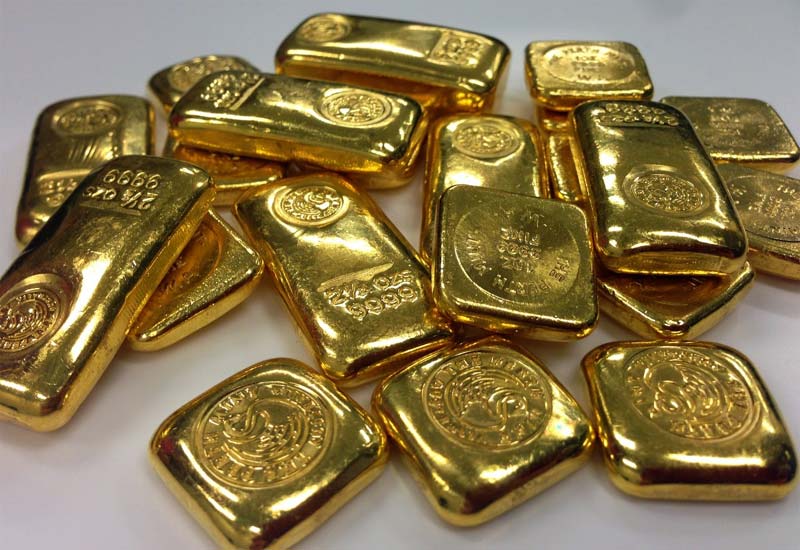
Money is of great importance to every person. But the money just sitting in your savings fund can soon become worthless. That’s why experts suggest investing in different ways for different types of investors and their risk appetites.
Investing means putting your money into something that should bring you profit. It could happen shortly or over the years, depending on your investment strategy and goals. As seen on this link, there are many investment vehicles, but one that everyone should consider is gold.
On the good side of this precious metal are its stability, inflation protection, and portfolio diversification. The disadvantages include its low yield and taxes, which some investors can’t bear. So before leaping to the yellow metal, it’s essential to understand the pros and cons of investing in it.
Stability
While the world economy is in a state of instability, gold is a time-honored investment that is synonymous with excellence. The dollar was once backed by this precious metal, but this system ended 50 years ago. And since then, this asset has kept its value whenever the currency is down.
The yellow metal is not a cheap investment – its supply is relatively limited, which affects its fairly high price per ounce. Furthermore, mining additional supplies is an expensive and time-consuming process. But the demand for gold is not decreasing. So that will probably result in a price increase over time.
Although the price of the yellow metal is relatively high, it tends to perform well during times of financial crisis and geopolitical tension. That also helps protect investors against inflation, as they purchase assets they believe will appreciate during an inflationary period.
Portfolio Diversification
Portfolio diversification is a crucial factor in asset allocation. While investing all your money in one asset may be tempting, it can also result in a large loss if the market drops. That’s because the volatility of an asset class is difficult to predict. By distributing your assets among different stocks, bonds, mutual funds, and precious metals, you can reduce the risks of loss.
Having some gold in your portfolio is always a good idea. The yellow metal is historically the world’s first currency and circulated in many economies before paper money. For these reasons, investors regard gold as an alternative asset, a commodity, a hedge against inflation, and an excellent portfolio diversifier. Moreover, it’s probably the best protection against gloom and doom scenarios.
Variety of Products

There are many ways that make it easy to invest in gold, including exchange-traded funds, mutual funds, and physical bullion. Each of these products has its own risk and return profiles, and each is unique. Beginners can start with physical gold, while seasoned investors can manage virtual assets.
For example, most investors prefer bars, bullion, and coins. These tangible assets give them more security as they can hold and store them wherever they want. But storage can be a problem. Also, there are various taxes and premiums, as the IRS taxes this asset as a collectible. The solution may include this precious metal in your self-directed IRA.
Purchasing gold certificates or ETFs allows you to invest in this precious metal without facing the risks of physical bullion, including theft and a wide bid-offer spread. Also, you won’t have to worry about taxes, storage fees, and credit risks of buying and selling gold in these forms.
Generally speaking, financial experts recommend allocating 10% or less of your portfolio to gold (15% during times of crisis). That’s because putting all your money in a single investment vehicle is never a good move. On the other hand, spreading the risk over several investments will keep your portfolio stable and protect you from complete loss.
High Liquidity
If you’re interested in gold investment, you’ve probably heard about its liquid nature. This precious metal is highly liquid, which means you can buy and sell it around the clock. But, of course, there’s a specific procedure that needs to be followed. Also, you probably must wait for favorable market conditions to trade this precious metal at the best prices.
No Yield
Despite all the good sides of investing in the yellow metal, there are a few downsides to keep in mind. First, this asset in physical form doesn’t pay dividends or yield interest. Of course, that could be possible if you put some money in gold stocks. But in most cases, you can only generate some profit when you sell this asset at a higher price than you pay.
Also, you can’t expect high profits from these transactions. Gold has a stable value, so it’s not prone to sudden price drops and rises. So investing in it and expecting a huge gain is an unrealistic scenario. That doesn’t make it a good option for hedge investors, i.e., those who earn on price up and downs.
If you think long-term, gold might be what you need in your portfolio. Predictions about this precious metal’s price are optimistic. It’s clear that everyone who has it will manage to preserve their funds and probably increase them in the next few years.
Storage Issues
When it comes to safety, storing your gold is an important decision. You can keep it in your safe box, but it’s vulnerable to theft. So you need to pay additional insurance to protect your investment. Also, you can pay extra penalties if you keep your IRA gold assets at home.
Another option is to choose a reliable IRA company. Reading Bullion By Post Review might help you gain more knowledge about third-party depositories for gold storage, which is an extra cost. Also, you should make sure these are legit and IRS-certified by the IRS. Otherwise, your investments may be at risk.
It may be worth investing a portion of your savings in gold to diversify your portfolio. That will give some shine to your portfolio and keep it stable during economic turmoil. As long as you are balancing the pros and cons of holding gold, you can’t go wrong.
Leave a Reply